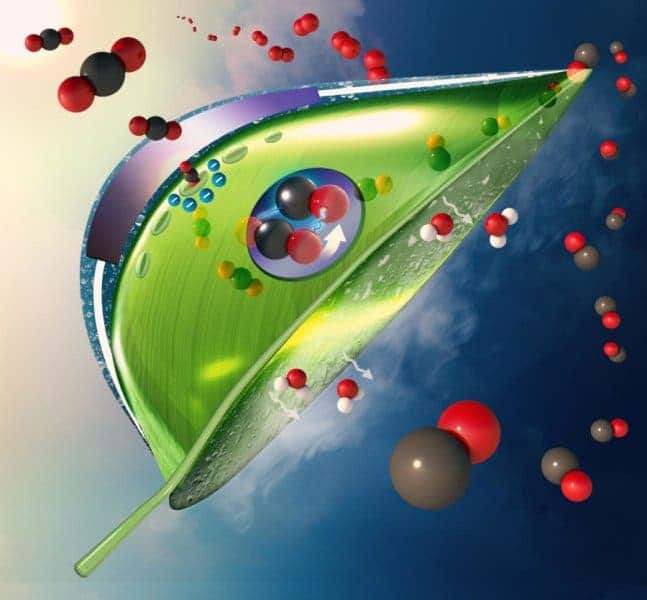A new design could bring artificial leaves out of the lab to convert CO2 into raw materials for fuel.

The idea behind artificial leaves isn’t very complicated — just make them do the same job regular leaves perform, but faster, if possible. Despite this, we’ve had a hard time actually delivering on the idea outside of laboratory conditions. New research, however, could improve on the technology enough to make it viable in the real world.
Leaf it to the catalysts
The sore point with our present artificial leaves is that they simply don’t gobble up CO2 at the concentrations it’s found in the atmosphere.
“So far, all designs for artificial leaves that have been tested in the lab use carbon dioxide from pressurized tanks. In order to implement successfully in the real world, these devices need to be able to draw carbon dioxide from much more dilute sources, such as air and flue gas, which is the gas given off by coal-burning power plants,” said Meenesh Singh, assistant professor of chemical engineering in the UIC College of Engineering and corresponding author on the paper.
While artificial leaves are meant to mimic photosynthesis, even our most refined leaves only work if supplied with pure, pressurized CO2 from tanks in the lab. It’s good that they work, it means we’re on the right track, but they’re not useable in practical applications. Because they only work with high concentrations of CO2, they can’t be used to scrub this gas out of the wider atmosphere, which is what we want to do with them.
Researchers at the University of Illinois at Chicago, however, propose a design solution that could fix this shortcoming. Their relatively simple addition to the design would make artificial leaves over 10 times more efficient than their natural counterparts at absorbing CO2. The gas can then be converted to fuel, they add.
Singh and his colleague Aditya Prajapati, a graduate student in his lab, say that encapsulating artificial leaves inside a transparent, semi-permeable capsule filled with water is all we need to do. The membrane allows water inside to evaporate which, as it passes through the quaternary ammonium resin membrane, pulls in CO2 from the air.

Carbon dioxide (red and black) enters the leaf as water (white and red) evaporates from the bottom of the leaf. An artificial photosystem (purple circle at the center of the leaf) made of a light absorber coated with catalysts converts carbon dioxide to carbon monoxide and converts water to oxygen (double red spheres) using sunlight.
Image credits Meenesh Singh.
The artificial photosynthetic unit inside the capsule then converts carbon dioxide to carbon monoxide, which can be siphoned off and used to make fuel. Oxygen is also produced and can either be collected or released into the surrounding environment.
“By enveloping traditional artificial leaf technology inside this specialized membrane, the whole unit is able to function outside, like a natural leaf,” Singh said.
The duo estimates that 360 such leaves, each measuring 1.7 meters by 0.2 meters (5.5 by 0.6 feet), could produce around half a ton of carbon monoxide per day. Spread over a 500 sq meter area, the leaves could reduce CO2 levels by 10% within 100 meters of the array in a single day, they add.
“Our conceptual design uses readily available materials and technology, that when combined can produce an artificial leaf that is ready to be deployed outside the lab where it can play a significant role in reducing greenhouse gases in the atmosphere,” Singh said.
The paper “Assessment of Artificial Photosynthetic Systems for Integrated Carbon Capture and Conversion” has been published in the journal ACS Sustainable Chemistry & Engineering.






